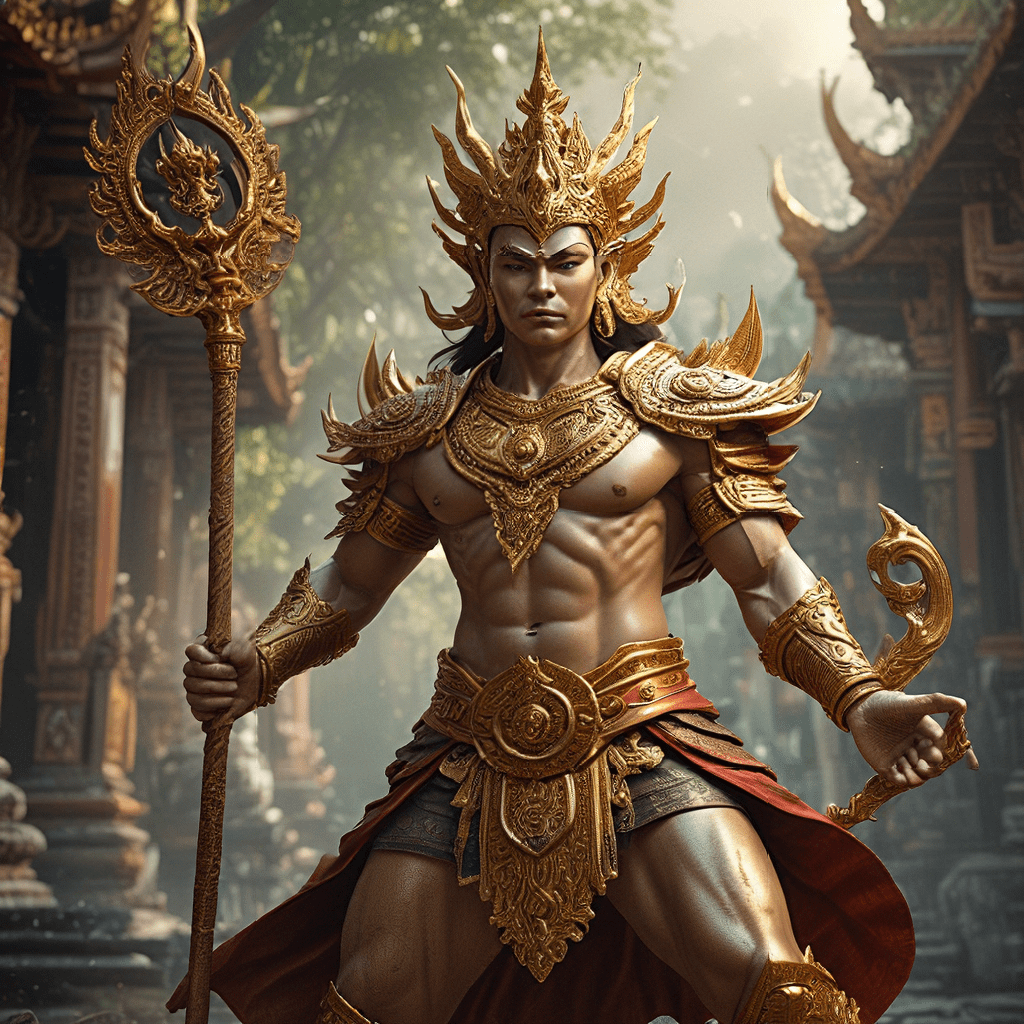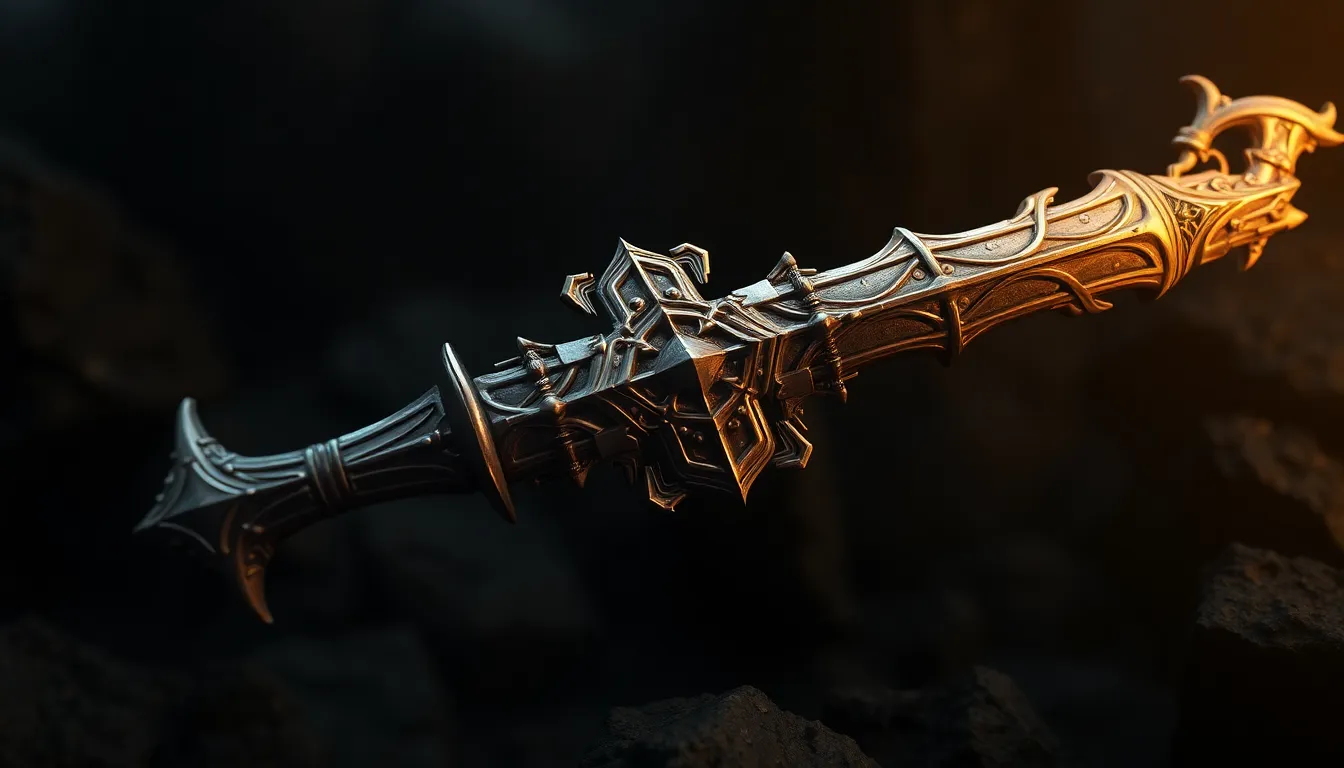Mythical Guardians of Thailand
Thailand, a land of vibrant culture and ancient traditions, is also home to a rich tapestry of myths and legends. At the heart of this folklore lies the concept of guardians, spiritual beings who protect individuals, places, and even the nation as a whole.
The Concept of Guardians in Thai Belief
Guardian figures are deeply ingrained in Thai belief systems. They are seen as powerful intermediaries between the human world and the spiritual realm, acting as protectors against harm and misfortune. The belief in guardians stems from the ancient animistic traditions of Thailand, where spirits are believed to inhabit every aspect of nature—from trees and rivers to mountains and rocks.
The concept of guardians is also heavily influenced by Buddhism and Hinduism, which have played a significant role in Thai culture for centuries. These religions emphasize the importance of karma, the law of cause and effect, and the power of divine beings to intervene in human affairs.
The Four Guardian Deities of the Directions
One prominent aspect of Thai guardian mythology is the concept of the Four Guardian Deities of the Directions. These divine beings, known as "Lokapala" in Sanskrit, represent the cardinal directions—east, south, west, and north.
The eastern guardian, Dhatarattha, is depicted as a white elephant, symbolizing purity and strength.
The southern guardian, Virupaksha, is portrayed as a king with a human body and a lion’s head, representing power and courage.
The western guardian, Virudhaka, is often depicted as a black dragon, symbolizing wisdom and prosperity.
- The northern guardian, Vaiśravaṇa, is commonly depicted as a four-faced, four-armed being, holding a sword and a jewel, symbolizing wealth and protection.
These guardians are believed to protect the land and its people from evil forces and to bring good fortune. Their images are often found in temples, palaces, and homes, serving as reminders of their watchful presence.
The Role of Animals in Thai Guardian Mythology
Animals play a significant role in Thai guardian mythology. Their symbolic associations with specific qualities contribute to their significance as protectors.
Elephants, for instance, are seen as symbols of strength, wisdom, and good fortune. They are often depicted guarding temples and palaces, representing the power and majesty of the king and the nation.
Lions, known for their ferocity and courage, are often associated with protection and are frequently depicted as guardians of places of worship and important landmarks.
Dragons, possessing mystical powers and the ability to control the elements, are seen as potent guardians against evil forces and bringers of prosperity.
Garudas, mythical creatures with the upper body of a human and the lower body of an eagle, are considered divine beings, capable of flying through the air and possessing great strength. They are often depicted as guardians of temples and protectors of the Dharma, the Buddhist teachings.
Nagas, serpentine beings that reside in the underworld, are often associated with water and fertility. They are also believed to protect people and places, especially those related to water.
Beyond these prominent animal figures, there are many other creatures in Thai mythology that are associated with guardian roles. These include monkeys, tigers, and even mythical creatures like the Kinnara, a winged being with a human head and a horse's body.
The Guardian Spirits of Places and Objects
Thai beliefs extend the concept of guardians beyond the realm of divine beings. It is believed that spirits, known as "phi," can inhabit various places and objects. These spirits are often associated with specific locations like forests, mountains, rivers, and even houses.
House spirits are particularly important in Thai culture. These spirits are believed to be the protectors of the home, and offerings are often made to them to ensure their favor.
Tree spirits, known as "phi ton," are believed to reside in ancient trees, especially those considered sacred. They are seen as benevolent guardians, and their presence is often invoked for blessings and protection.
Water spirits are believed to inhabit rivers, lakes, and seas. They are often associated with fertility and abundance and are often honored through rituals and offerings.
These spirit guardians are not always seen as benevolent and can sometimes be mischievous or even malevolent. Respecting their presence and offering them appropriate offerings is considered essential for maintaining harmony and protection.
The Mythological Origins of Guardian Figures
The origins of Thai guardian mythology are intertwined with its cultural and historical influences. Many guardian figures are believed to have emerged from ancient animistic beliefs, where spirits are attributed to the elements of nature.
The influence of Hinduism and Buddhism is also evident in Thai guardian mythology. The Four Guardian Deities of the Directions, for example, are directly derived from Hindu mythology. Similarly, the Garuda is a prominent figure in both Hindu and Buddhist cosmology and is often depicted as a protector in Thai temples.
Over time, these beliefs have blended and evolved, creating a unique and complex tapestry of guardian figures in Thai mythology. These figures are not merely passive protectors but dynamic entities who actively participate in the lives of individuals and communities.
The Mythological Origins of Guardian Figures
The origins of Thai guardian mythology are intertwined with its cultural and historical influences. Many guardian figures are believed to have emerged from ancient animistic beliefs, where spirits are attributed to the elements of nature. These beliefs existed long before the arrival of Hinduism and Buddhism, which later influenced Thai culture.
For example, the belief in tree spirits, known as "phi ton," is deeply rooted in animistic traditions. These spirits were often associated with specific trees, especially those considered sacred, like giant banyan trees or trees that had grown on sacred ground. People believed these trees were imbued with spiritual power, and their spirits were capable of offering protection and guidance to those who respected them. This belief continues to this day; people may offer food or flowers to tree spirits for good luck or to request their blessing.
Similarly, the belief in water spirits, known as "phi na," stems from the ancient veneration of rivers, lakes, and seas. These spirits were often viewed as guardians of water sources, responsible for maintaining balance and fertility. People would make offerings to these spirits to ensure a good harvest, safe passage on waterways, and protection from floods.
Theories on the Influence of Hinduism and Buddhism
While animistic beliefs formed the foundation of Thai guardian mythology, the arrival of Hinduism and Buddhism in Thailand around the 2nd century CE brought new layers of complexity. Both religions emphasize the existence of a divine realm and the importance of karma, the law of cause and effect. These concepts contributed to the development of guardian deities with specific roles, powers, and attributes.
One notable example is the influence of Hinduism on the Four Guardian Deities of the Directions, known as "Lokapala" in Sanskrit. These deities, representing the cardinal directions, are deeply ingrained in Hindu cosmology and were adopted by Thai Buddhism. The Lokapala were seen as powerful protectors of the world, ensuring order and stability. Their association with the four directions gave them a specific role in protecting the land and its people.
Buddhism, in turn, introduced concepts like the "Dharma," the Buddhist teachings, and the "Garuda," a mythical bird-like creature, into Thai mythology. The Garuda, with its association with the Dharma and its ability to fly through the air, became a powerful symbol of protection and good fortune. The presence of the Garuda in temples and other sacred sites served as a reminder of the importance of upholding the Buddhist teachings and seeking refuge in the divine.
The Importance of Guardians in Daily Life
Guardian figures are not just figures of mythology; they are woven into the fabric of daily life in Thailand. People continue to seek their protection and blessings, seeking refuge in the spiritual realm for peace, prosperity, and safety.
The most visible way guardians are integrated into daily life is through their presence in temples, palaces, and homes. Images of guardians, like the Four Guardian Deities of the Directions, the Garuda, or the lion, are often carved into doorways, walls, and pillars. These images serve as reminders of the presence of these protectors, offering a sense of security and well-being.
Beyond their physical presence, guardian figures are also invoked in rituals and ceremonies. People might offer food or incense to tree spirits, seeking their blessings for good fortune or a successful harvest. They may also seek the guidance of guardian deities before embarking on important journeys, asking for their protection and help in overcoming obstacles.
The belief in guardians also plays a role in shaping Thai social norms and behavior. For example, the concept of "karma" influences people's actions, reminding them that their deeds will have consequences. Respecting the spirits of nature and honoring guardian deities is seen as essential for maintaining harmony and well-being.
Guardians in Thai Art and Architecture
Thai art and architecture are deeply influenced by guardian mythology. The images of guardian figures can be seen everywhere, from the intricate carvings on temple walls to the statues that stand guard at palace gates.
Temples, in particular, are filled with representations of guardian figures. The Four Guardian Deities of the Directions often adorn the corners of temple grounds, symbolizing their role in protecting the sacred space. Statues of the Garuda, with their powerful presence, are often placed at the entrance of temples, acting as guardians against evil forces and welcoming visitors.
Palaces, as the seats of power and authority, are also adorned with images of guardian figures. Lions, symbolizing strength and courage, are often carved into the gates of palaces, representing the protection and majesty of the king. Images of elephants, symbolizing wisdom and good fortune, are also commonly found in palaces, reminding visitors of the importance of respect and reverence for authority.
The intricate carvings and depictions of guardian figures in Thai art and architecture are not merely decorative. They are carefully crafted expressions of faith, belief, and the enduring power of mythology. They serve as reminders of the unseen forces that shape our world and the importance of seeking protection and guidance from the spiritual realm.
The Enduring Power of Thai Guardian Mythology
Thai guardian mythology continues to hold a strong grip on the hearts and minds of people in Thailand today. While modern life has introduced new belief systems and trends, the enduring power of these ancient myths remains evident in many aspects of Thai culture.
The belief in guardians, particularly tree spirits, water spirits, and house spirits, persists in rural communities. People continue to offer food and incense to these spirits, seeking their favor and protection. The concept of karma also remains a powerful influence, shaping people's actions and decisions.
Even in urban areas, where modern life is more prevalent, the influence of guardian mythology is still apparent. The Four Guardian Deities of the Directions are often invoked in prayers and ceremonies, seeking their blessings for good fortune and protection. The images of guardian figures, like the Garuda and the lion, are still widely used in design and architecture, serving as reminders of the enduring power of these ancient beliefs.
The enduring power of Thai guardian mythology lies in its ability to offer comfort, guidance, and a sense of connection to something bigger than ourselves. In a world that can often feel chaotic and unpredictable, the belief in protectors and spiritual forces provides a sense of hope, resilience, and the enduring power of faith.
FAQ
What is the role of guardians in Thai mythology?
- Guardians are spiritual beings who protect individuals, places, and even the nation as a whole. They serve as intermediaries between the human world and the spiritual realm, offering protection against harm and misfortune.
What are the Four Guardian Deities of the Directions?
- The Four Guardian Deities of the Directions, known as "Lokapala" in Sanskrit, represent the cardinal directions—east, south, west, and north. They are believed to protect the land and its people from evil forces and to bring good fortune.
How are animals depicted in Thai guardian mythology?
- Animals play a significant role in Thai guardian mythology, often representing specific qualities that make them suitable protectors. For example, elephants symbolize strength, wisdom, and good fortune, while lions are associated with ferocity and courage.
What is the difference between guardians and spirits in Thai mythology?
- While both guardians and spirits are considered powerful entities in Thai mythology, guardians are often associated with divine beings or powerful animals, whereas spirits are believed to inhabit places and objects.
How is Thai guardian mythology used in daily life?
- People continue to seek the protection of guardian figures through rituals, offerings, and even the placement of images in homes and temples. They are a vital part of Thai culture, shaping social norms and providing a sense of comfort and security.


